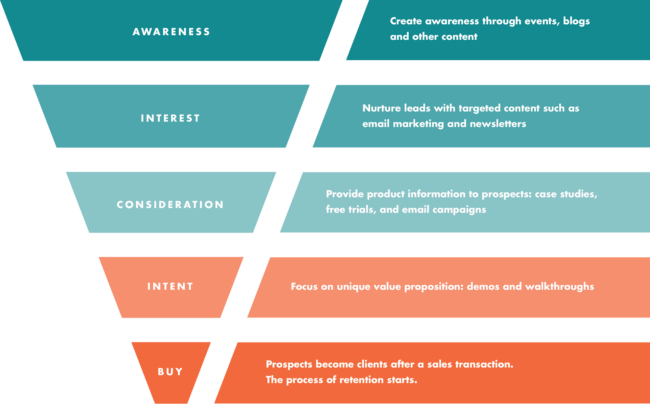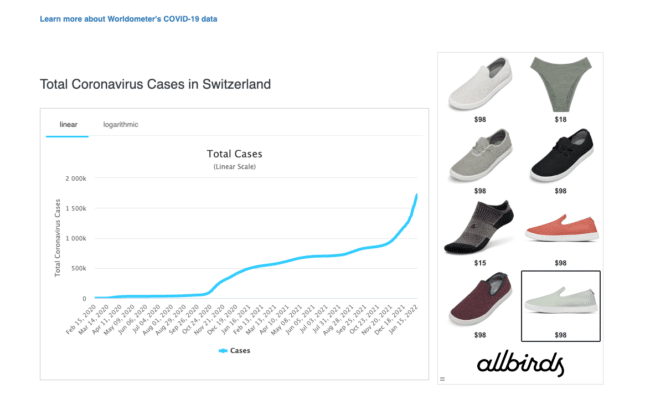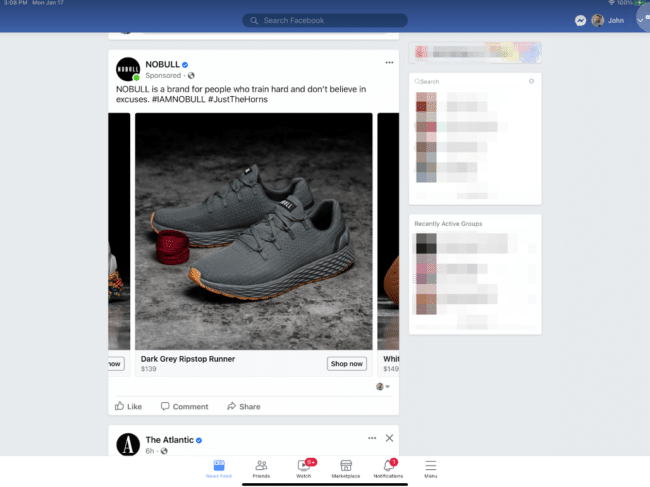Over the years I have had a lot of people ask me about “the latest tips and tricks” for digital marketing, but these same people are not doing the basics of digital marketing like content marketing or ad retargeting that are proven to drive results.
While I get that some people want to be on the cutting edge of things and to find new things that are working in order to get ahead of their competitors, I’ve also found that many of these same people have not spent any time setting a solid foundation for their digital marketing.
There are a few ways to approach marketing. I’m curious which one you’d define yourself as:
- Research a topic, do some of it yourself, find an expert, operationalize it, and then move on to the next.
- Work on a channel, hear about a new one, try it out, and always looking for the next new thing to try.
I actually believe that a balance is a right approach for most businesses. As an entrepreneur myself, I want to understand what others are doing, and what we may not be doing well, while at the same time building a repeatable business that consistently drives traffic and makes sales because of systems set up a long time ago.
To do this, you need to set up systems that consistently bring in new customers in a profitable way.
Looking for help with your retargeting and advertising strategies? Whether you’re just getting started or looking to scale, we have providers who can help. Click here to speak with one of our matching experts to get going.
One of the best ways to get more paying customers from the traffic you’re already getting is digital retargeting, and that’s what this article is all about.
Table of Contents
What is digital retargeting?
According to AdRoll, an e-commerce marketing platform:
“Retargeting is a typical form of Behavioral targeting because it targets people who visited a webpage. For example, after someone visited a particular product page, the person is later served a display ad on another site for the same product he or she viewed.”
In short, retargeting is a form of advertising that allows companies to show targeted ads on other websites to people who have already visited their website.
Your goal with retargeting is to bring those who have already visited your site, but not bought, back to accomplish their goal. Of course, there will be people who came to your site and didn’t see what they needed, but there are likely to be many more who come to your site and then go to another to continue their research journey. If you retarget them, they are more likely to come back to you, rather than a competitor, to buy!
In this article, we’re going to talk all about retargeting: what it is, how it works, and much more.
The difference between advertising and retargeting
Simply put, retargeting is a form of advertising. “Advertising” itself is an extremely broad term that can encompass all sorts of channels like TV, radio, print, and digital.
Retargeting is a specific type of advertising that allows your message to follow website visitors around the internet to other websites they visit. Ultimately, your goal is to keep them engaged, or at least your brand in front of them, until they come back to buy.
Retargeting, also known as remarketing, is a form of online advertising that can help you keep your brand in front of bounced traffic after they leave your website. For most websites, only 2% of web traffic converts on the first visit. Retargeting is a tool designed to help companies reach the 98% of users who don’t convert right away.
Why is retargeting important?
Retargeting as part of your overall advertising strategy is important because it allows you to convert more of the website visitors you are already paying to get.
Not all visitors to your website are in the market to buy, and those who are in the market to buy are looking to make a decision relatively quickly. In this scenario, your copywriting and how well your offering aligns with what they want will win you the customer.
Like Retargeter said in the quote above, the other 98% of website visitors are not directly ready to buy. Maybe they have questions. Maybe they’re just starting their journey and are in the awareness phase. Maybe they’ve already done a bunch of research and they’re in the interest or consideration stage.

https://moz.com/blog/optimize-conversion-funnel-tofu-bofu
Point is, there are a LOT of people who are coming to your website who are not ready to convert. If they leave your site and you DON’T follow them around the internet with your messaging, they’re not going to remember your brand.
Even people who come to our website and fill out our forms and schedule a call forget who we are. If you’re an e-commerce company, do you really think they’re remembering your Shopify store?
Looking for help with your retargeting and advertising strategies? Whether you’re just getting started or looking to scale, we have providers who can help. Click here to speak with one of our matching experts to get going.
As much as we like to think they will, the truth is that they likely will not. But, if you follow them around the internet, on websites and social media platforms they’re spending a lot of time on, with the goal of enticing them to come back and keep looking there is a good chance that you will hook them into whatever it is you are selling them, and they will eventually buy from you.
What are the different types of retargeting?
Now that we’ve defined retargeting and talked about WHY you need to include it in your advertising strategy, let’s talk about some of the main types of retargeting.
These include:
- Search retargeting
- Display retargeting
- Content retargeting
- Social media retargeting
- Email retargeting
Search retargeting is using platforms like Google Ads to retarget users who have arrived at your website before. Google’s retargeting lists for retargeting information is here, but essentially once you have 1,000+ people on your list you are able to retarget people with search ads or on the Google Display Network.
Display retargeting is using a display network, such as Google’s or AdRoll’s, to put your ads on websites that have their advertising network enabled to make them money. This allows you to expand beyond just Google or Facebook or YouTube or similar sites, and to have your ads on OTHER websites your previous site visitors are also visiting.
Content retargeting is my term for offerings like Taboola or Outbrain who specialize in driving clicks to content. These are networks in and of themselves to be sure and are not solely used for retargeting (just like Google and Facebook are not just for retargeting either). A lot of news publishers use these networks on their highly-trafficked sites because advertisers on Taboola, Outbrain, and similar sites are often happy to pay the higher costs because of the sheer volume of traffic they can get (and these advertisers are often running some sort of advertising arbitrage business model).
Social media retargeting is one of the main types of retargeting where you install a social media company’s code (“pixel”) on your website that then lets you show ads to that same person when they are logged in to the social network. This type of retargeting is incredibly powerful because the reach is so large. Social media sites like Facebook and Quora are some of the main ones doing this.
Finally, email retargeting can be super powerful once the visitors has checked out with you before and you therefore have their information. If they are logged into your site and forget to check out (“abandon their cart”) or just browse products and then leave, you can directly email them about those products. Zillow does this to me all the time:

What are some examples of retargeting?
Here are some examples of retargeting.
This one is AllBirds (New Zealand merino wool shoe and clothing company) retargeting me on Worldometers:

Here is NOBULL, another shoe startup that I’ve been eyeing a pair of shoes from, who are retargeting me on Facebook:

And here is Steep and Cheap, a discount outdoors gear that is owned by Backcountry.com, sending me a list of products I viewed on their site last fall as I was looking for a new pair of skis:

How do I set up retargeting?
Setting up retargeting does require some technical knowledge to get started.
First, you need to go to your platform of choice and create an ad account. They will then give you a piece, or “snippet”, of JavaScript code that is unique to your account with your unique account ID included.
Looking for help with your retargeting and advertising strategies? Whether you’re just getting started or looking to scale, we have providers who can help. Click here to speak with one of our matching experts to get going.
You will then take that piece of code and put it on your website, usually in your website’s <head> or footer (if you don’t know what these are, ask your friendly local geek or marketing agency), and then verify it on the advertising platform.
A better and more user-friendly way to add it to your website is to use Google Tag Manager where you can add a new Tag to your setup and publish it to your website. This removes the need to add each individual snippet to your website and manage them directly in your website files.
Once your website is verified with the advertising platform, you usually need to let it gather data for a while before it makes sense to launch campaigns and build new audiences (usually called “lookalikes”) from the visitors who have come to your website. One of your most effective campaigns will likely be a lookalike based on your customers, not just your site visitors. Once you have data on who is buying (demographics, etc), launching specific campaigns that just target those similar visitors to your website will also likely show big returns.
Looking for help with your retargeting and advertising strategies? Whether you’re just getting started or looking to scale, we have providers who can help. Click here to speak with one of our matching experts to get going.

